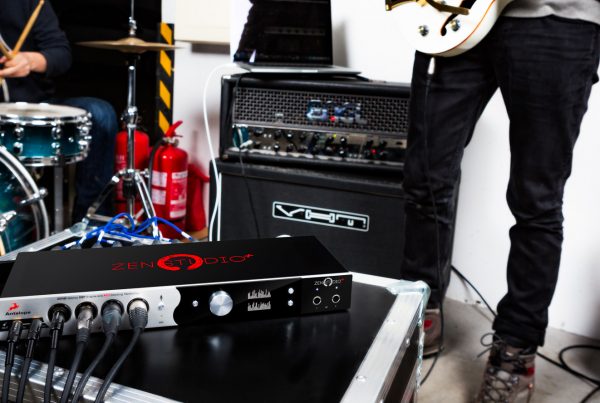Terminology related to digital clocking appears frequently in the audio production world, but is often misunderstood. Digital clocking impacts any studio, large or small, and a proper understanding is essential to achieving quality digital audio.
Clocking can be the key to making digital sound “warm” and alive. The following is an example to help familiarize users with the terms and concepts involved with digital clocking.
Let’s start with the basics.
Digital audio is sound stored as binary data (ones and zeros). Each piece of data is called a sample, which is essentially a brief “snapshot” of the signal’s amplitude. Sample Rate refers to the amount of samples used to represent one second of digital audio. Commercial compact discs have a sample rate of 44.1kHz (44,100 samples per second).
Some professional components offer sample rates higher than 44.1, attempting to achieve better results with a greater number of samples used to represent the audio. Although some praise the benefits of higher sample rates, clocking is arguably a more important variable, but one often overlooked.
If a device operates at a given sample rate, this sample rate is based on timing provided by a digital clock. This clock provides pulses at the chosen sample rate, and these pulses determine the placement of each sample.
Given the precise nature of digital, it’s easy to assume that a device provides the exact sample rate requested, but this is simply not the case. Digital Clocks are subject to fluctuation. A device set to 44.1 could very well be operating at 44.12 at one moment, then shift to 44.09 moments later. These audio-damaging fluctuations are called jitter.
This is a jitter-free audio signal, zoomed in to the point where individual samples are visible. Because it is jitter-free, each sample is separated by the exact same period of time.
Jitter causes samples to occur earlier or later than expected, creating a misrepresentation of the original signal. The blue samples are falling at irregular periods, resulting in a signal that deviates from the original.
A common misconception of jitter is that it sounds similar to a skipping CD, but this is not the case. Jitter might not be as immediately obvious, but it is arguably more sinister. These microscopic errors result in lost detail, poor stereo imaging, and less cooperation in a mix. Critics of digital audio often describe the medium as “harsh” and “lifeless”. These undesirable qualities are typically due to poor clocking, as opposed to the medium itself.
An accurate, jitter free clock is essential to high quality digital audio.
If a device does not have a high quality internal clock, it may be capable of slaving to an external clock. Typically, any device with Word Clock, AES/EBU, S/PDIF and/or Lightpipe inputs can slave to external clock. This external clock can be a dedicated master clock, or any other piece of gear with a corresponding output. Slaving to a better clock will immediately improve its sound quality.
If there are multiple studio components that are digitally interconnected, they must all be synchronized to the same clock source. Again, this can be a dedicated master clock, or another device with the appropriate clock outputs.



